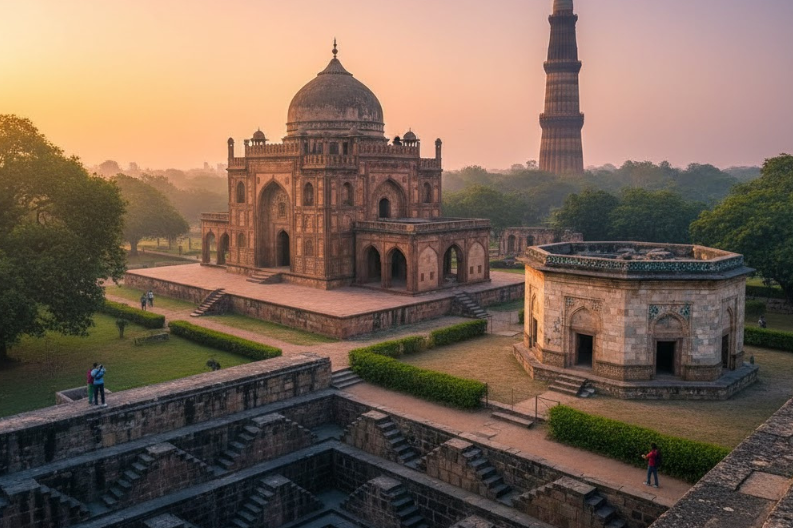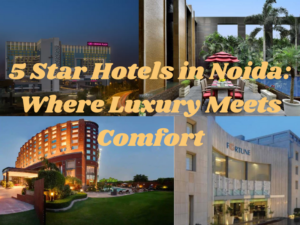Located in Delhi’s Jor Bagh district, Safdarjung Tomb of Delhi is one of the city’s greatest landmarks, but it’s not crowded or popular. While tons of tourists from all over the world make sure to visit places like the Jama Masjid and Humayun’s Tomb, Lord Safda’s Tomb is one that is often missed, perhaps reserved for those special people who need to a few more steps to get here.
About Safdarjung Tomb of Delhi
Safdarjung’s Tomb is the last closed garden tomb in Delhi in the Humayun tradition, although on a much smaller scale. It was built in 1753-54 as the mausoleum of Governor Awadh Safdarjung under Mughal Emperor Muhammad Shah.
It has several smaller pavilions with evocative names such as Jangli Mahal (Palace in the Forest), Moti Mahal (Pearl Palace), and Badshah Pasand (King’s Favorite). The complex also has a madrasa. The Archaeological Survey of India has a library above the main entrance.
The tomb contains the grave of Safdarjung, the leader and political personality who served as Prime Minister of the Indian Subcontinent or Wazir ul-Hindustan during the reign of Ahmad Shah Bahadur. Built by his son Nawab Shujaud Daula, it remains the last garden tomb that reflects the architecture of the Mughal era.
It is a favorite of all ages with its manicured lawns, fountains, waterways, and beautiful structures. Some come here to enjoy the winter sun on their lawns, others are equipped with cameras to capture lines and changes in light and shade.
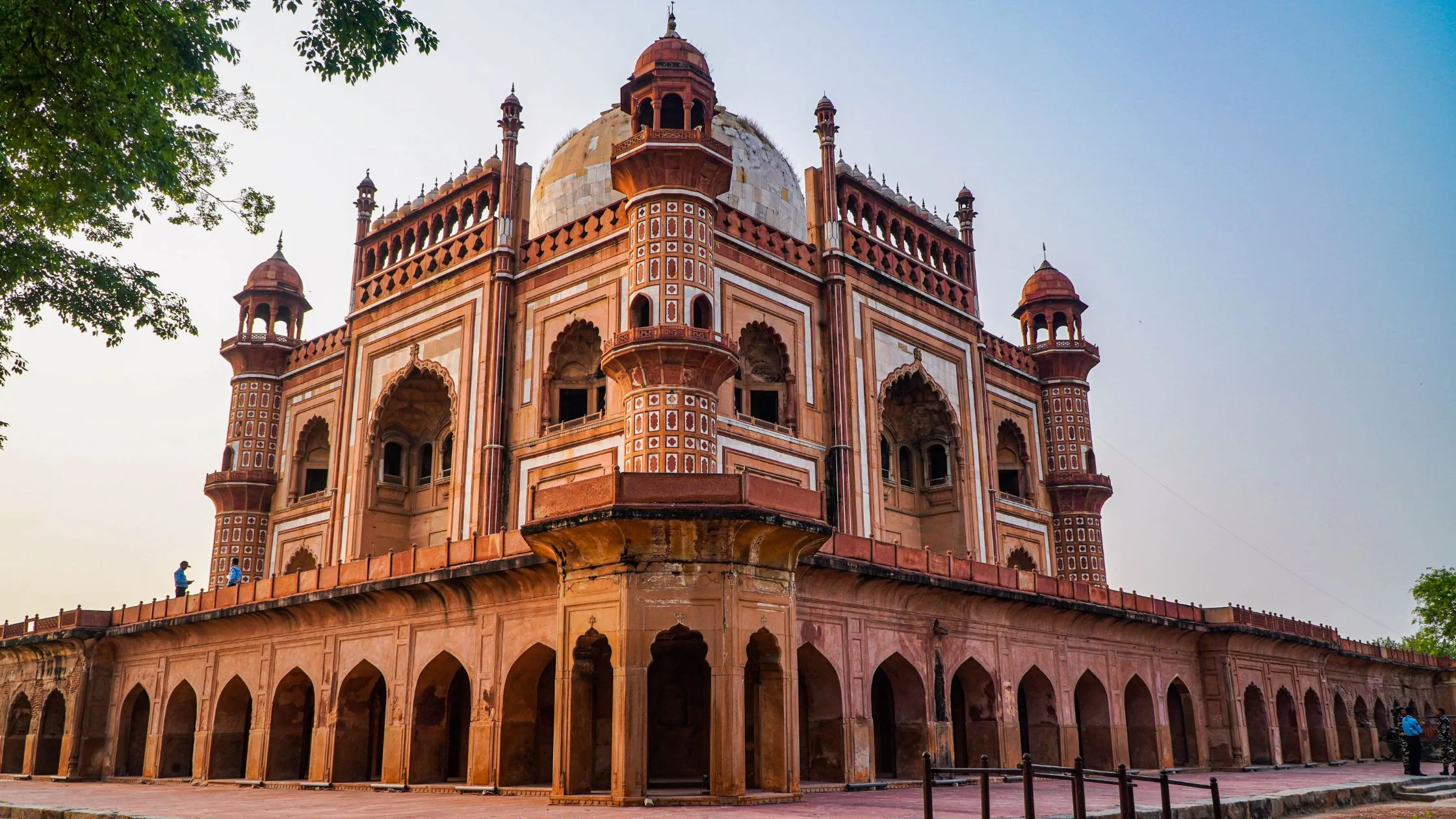
History of Safdarjung
Mirza Muqim Abul Mansur Khan, also known as Safadarjung, presided over Awadh as an autonomous ruler of the Governorship of Muhammad Shah. After the death of Emperor Muhammad Shah, Lord Safdar moved to Delhi.
In 1748, Mohammed Shah Ahmed Shah invoked Mughal supremacy in Delhi. Safdarjung took the title of Wazir ul-Hindustan and obtained the post of Prime Minister of the Kingdom. At this time, the function and influence of the empires were declining as their territorial dominance covered only northern India.
Safdarjung was the dominant figure in the political arena. As prime minister, he controlled all important powers, leaving the king a mere figurehead with no real decision-making power. But his rule became so arbitrary that in 1753 the Marathas were forced to drive Safdarjung out of Delhi, and he died soon after in 1754.
Interestingly, many of the materials used in the construction of Safdarjung’s tomb were stolen from the tomb of Abdur Rahim Khan-i-Khana. It is situated in the present-day Nizamuddin area near Humayun’s tomb.
These materials, namely sandstone and marble, add luster to the Safdarjung Mausoleum and, at the same time, indicate its authenticity. That’s why it closely resembles Humayun’s tomb and is called by many a monument to his cousin.
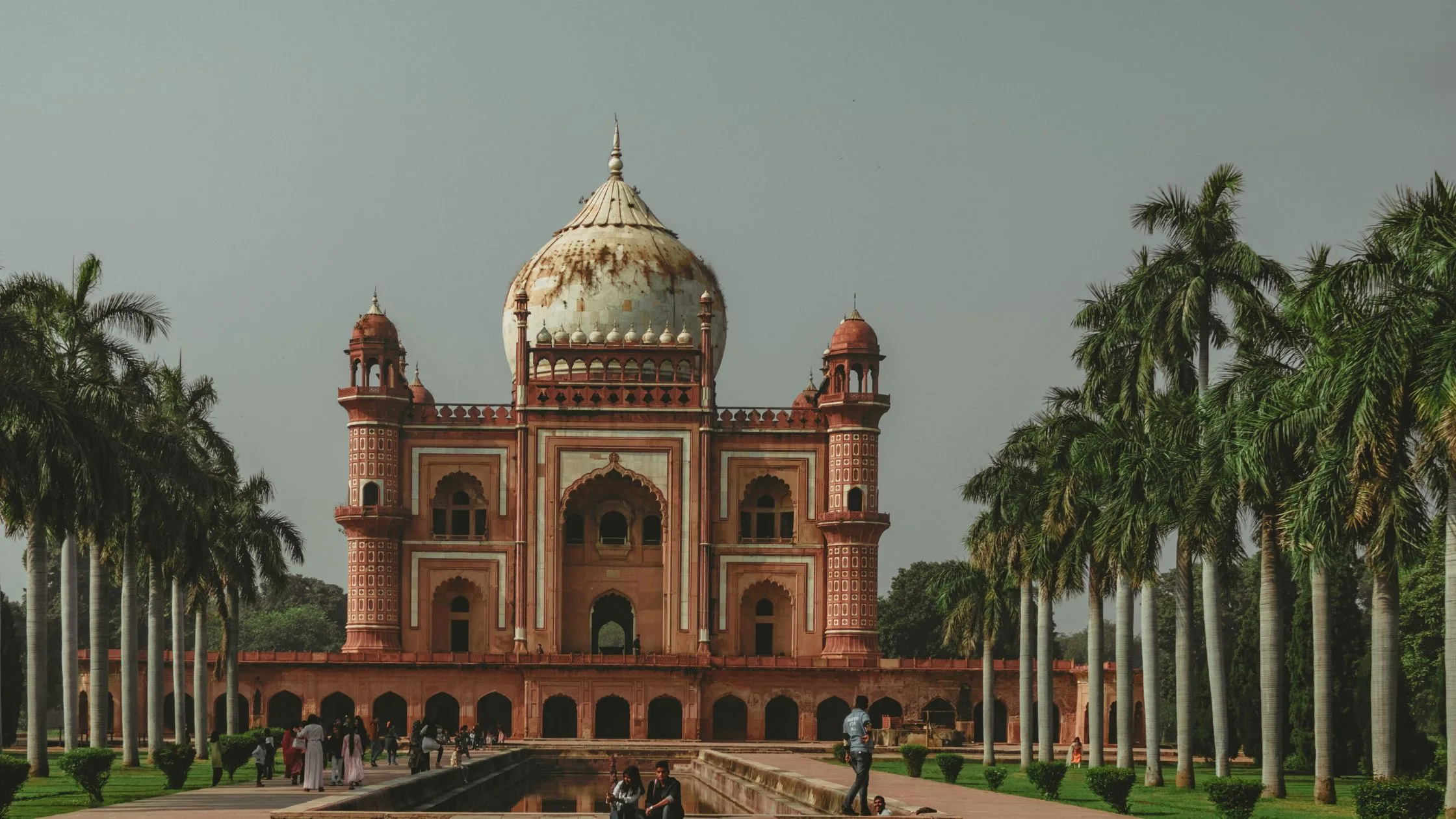
If you look closely, you can see that the headstone is light brown stone, and the marble is yellow with spots. This is indicative of the socio-economic conditions under which the imperial economy was in decline, making wealth and workers more difficult to obtain.
The tomb of Safdarjung reveals significant events in history that may be rarely mentioned in history books. It also became an important center for literature, art, architecture, and music.
Architecture of The Safdarjung Mausoleum
Safdarjung Mausoleum was the last garden tomb of the Mughals. This makes it extremely importantStr in the history of the Mughals.
It was designed by an Ethiopian architect who built a mausoleum similar in style to Humayun’s tomb. The burial is surrounded by a huge square garden. Here you can find birds of all kinds, people lying in the sun, and children enjoying nature. Inside the complex is a three-domed mosque.
Although few people come here to worship, its tranquility immediately slows down. The large dome in the center of the tomb immediately catches your eye, but look closer, and you’ll find some interesting details on the walls. Built with beige and red sandstone, the mausoleum is in keeping with several other Mughal monuments in the city.
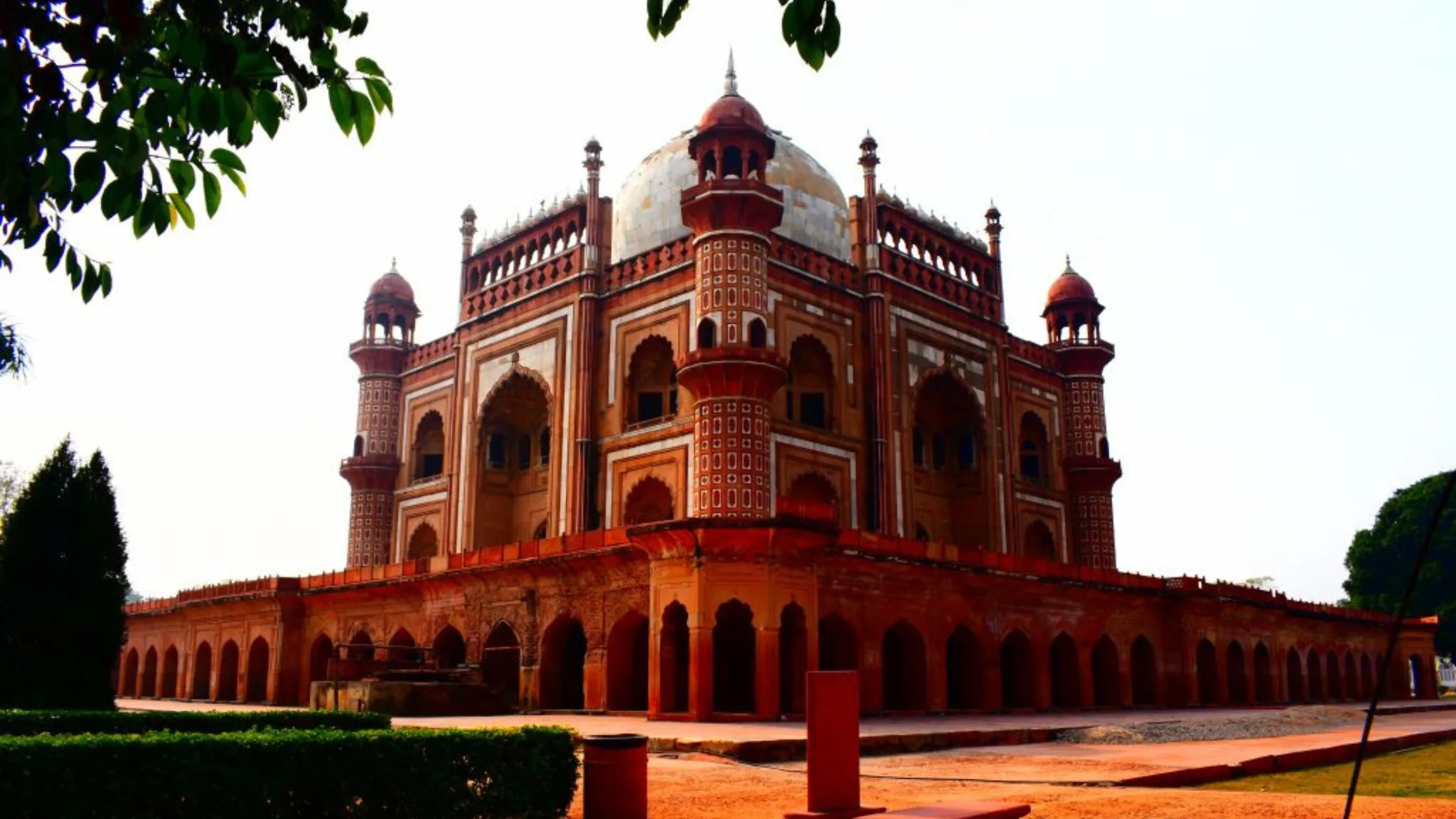
Standing at the front door, you will have a picturesque view of the monument. An Arabic inscription was found with an interesting meaning: “When the ordinary hero departs from the ephemeral, may he become a resident of the god’s paradise.”
Phenomenal Structures Within the Complex
Square atrium with a cenotaph in the middle, divided into eight compartments. The four towers surrounding the main tomb are of astonishing height. One can only imagine the prestige they conferred on the monument during its creation.
The towers have faded marble panels, and on the arches, you can still see the artist’s elaborate work.
The tombs of Safdarjung and his wife are located in the basement of the mausoleum and are not accessible. The ceiling of the mosque is decorated with stucco paintings, which look very beautiful.
When you see this monument for the first time, you are immediately struck by its resemblance to the Taj Mahal. Still, interestingly, it does not have the symmetry of the Taj Mahal, hence its slightly tilted appearance.
The four minarets are also part of the mausoleum, unlike the Taj Mahal minarets, which were built separately. The architecture of monuments is ambivalent when it comes to being admired and despised.
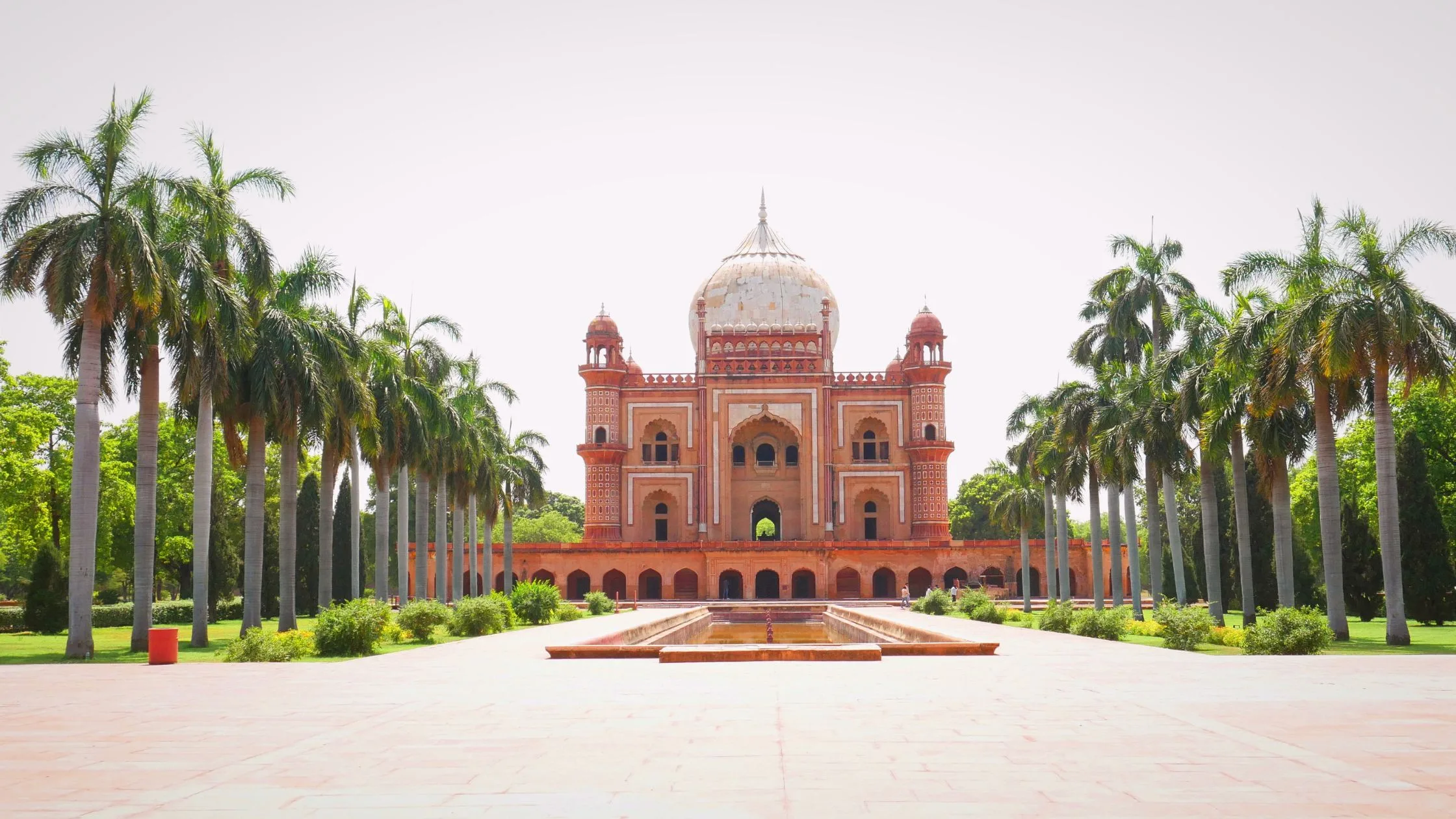
Things to do at the Tomb
At Safdarjung’s Tomb of Delhi, there isn’t much to do. You can explore history and mythology and trace the culture of a bygone era. So the first thing we recommend you do is find a quiet and comfortable corner of your garden and experience the pure and holy place it is meant to be.
The immaculately maintained gardens are a joy to wander around. You’re sure to enjoy this little piece of natural beauty in the heart of a heavily polluted city.
You will surely be tempted to click a few photos after seeing its unparalleled architecture. It’s especially beautiful against the pink and purple sky and sunsets, so try to visit at this particular time.
Final Words
Suppose you are passionate about history or want to deepen your knowledge. In that case, we recommend that you hire a local guide. They will detail the history, architecture, and history of the monument and introduce you to its various elements.
The Tomb is a prominent tourist place, just like Humayun’s Tomb. The Archaeological Survey of India also recently placed 213 lamps at the Safdarjung tomb of Delhi, which is fully lit every night from 7:30 a.m. to 11 p.m.
Unfortunately, tourists are not allowed in at this time. But even if you are just spending the night, stop and admire it. We guarantee you will be delighted.


